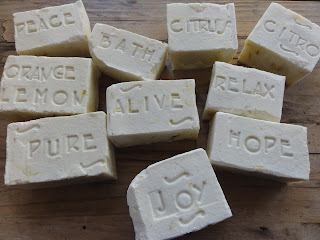Warm, comfort food on icy winter mornings fills the tummy and satisfies the soul. Hot porridge is an economical breakfast choice. I serve it to my family three times a week.
Versatile oats porridge can be livened up in many different ways. I usually enrich the oats by cooking them in a milk and water mixture and then we eat it topped with honey and cinnamon.
For each serving I cook together 1/2 c rolled oats, 1/2 c milk, 1 c water and a pinch of salt in the pot.
Bring it to the boil and simmer for a few minutes until it is creamy and thickened. That's it.
But that doesn't have to be it. Oats porridge welcomes all sorts of toppings and additions.....
- Cook it up with a handful of raisins and chopped apple before topping it with honey, nuts and cinnamon
- Add a dollop of apricot jam as a topping, or any other preserve.
- Serve with berries or stewed rhubarb and yoghurt.
- Sliced banana included with the honey and cinnamon is delicious.
- Chopped dates and cardamon cooked into the porridge is sublime.
- I saw a swish restaurant in Johannesburg serving oats porridge decadently topped with strawberries and cream.
- A really healthy option is to add a little bran, oat bran and a ground seed mix to the porridge.
Another breakfast porridge that we have been enjoying lately is good old mieliemeel or maize meal porridge. This is a traditional African staple food. The commercially produced maize meal has been stripped of most of its goodness and overrefined. So I add our own home ground yellow maize to the white mieliemeel for a healthier alternative.
Maize is grown on this farm. What fun to play in a shower of corn kernels as they pour out of the combine harvester into the waiting truck.
Last winter we gleaned the field for leftover heads of mielies after the combine and before the cattle got to it. We picked a few crates of the dried maize. For days we sat in the evenings and shucked the corn kernels off the cobs, later using the dried cobs as excellent firelighters. We collected two buckets of dried corn.
My generous husband blessed me with a grinder earlier this year which noisily turns those kernels into meal.
Versatile oats porridge can be livened up in many different ways. I usually enrich the oats by cooking them in a milk and water mixture and then we eat it topped with honey and cinnamon.
For each serving I cook together 1/2 c rolled oats, 1/2 c milk, 1 c water and a pinch of salt in the pot.
Bring it to the boil and simmer for a few minutes until it is creamy and thickened. That's it.
But that doesn't have to be it. Oats porridge welcomes all sorts of toppings and additions.....
- Cook it up with a handful of raisins and chopped apple before topping it with honey, nuts and cinnamon
- Add a dollop of apricot jam as a topping, or any other preserve.
- Serve with berries or stewed rhubarb and yoghurt.
- Sliced banana included with the honey and cinnamon is delicious.
- Chopped dates and cardamon cooked into the porridge is sublime.
- I saw a swish restaurant in Johannesburg serving oats porridge decadently topped with strawberries and cream.
- A really healthy option is to add a little bran, oat bran and a ground seed mix to the porridge.
Another breakfast porridge that we have been enjoying lately is good old mieliemeel or maize meal porridge. This is a traditional African staple food. The commercially produced maize meal has been stripped of most of its goodness and overrefined. So I add our own home ground yellow maize to the white mieliemeel for a healthier alternative.
Maize is grown on this farm. What fun to play in a shower of corn kernels as they pour out of the combine harvester into the waiting truck.
Last winter we gleaned the field for leftover heads of mielies after the combine and before the cattle got to it. We picked a few crates of the dried maize. For days we sat in the evenings and shucked the corn kernels off the cobs, later using the dried cobs as excellent firelighters. We collected two buckets of dried corn.
My generous husband blessed me with a grinder earlier this year which noisily turns those kernels into meal.
I usually sift the coarse bits out to be cooked up for a different meal as polenta. I also mix the meal into bread that I am baking to make yellow cornbread.
To make porridge, I mix the lovely yellow meal 1:1 into commercial white maize meal which is more refined. This makes a smooth, tasty, healthier porridge than the standard version.
When I cook it for my family of four, I boil up half a large pot of water with a pinch of salt, sprinkle over two cups of maize meal while stirring rapidly. It bubbles like lava and spits hot porridge out the pot, so I cover it quickly with a lid then simmer the porridge at a very low temperature for about ten minutes.
This is delicious served with a tiny pat of butter and a drizzle of honey.
Traditionally it is eaten with milk and sugar.




























